In an increasingly unpredictable world, personal safety has become essential in every environment we occupy – our homes, schools, and workplaces. Every precaution must be taken to ensure that our environments are free from these hazards to live safely.
Amid this uncertainty, there’s one scenario we need to be especially ready for – active shooter situations. With the deadly, documented rise in school shootings and mass gun violence, it’s more important now than ever to take steps to ensure you and others are safe; at home, at work, and at school.
When there’s an active shooter, what can you do to help ensure your safety? When you’re trying to secure yourself with little time to act, portable security devices like DoorJammer can prove to be critical, but it’s part of the bigger picture, alongside other steps you need to take.
In this article, we’ll walk you through 15 different ways to protect yourself and others against active shooters, at home, at work, and at school.
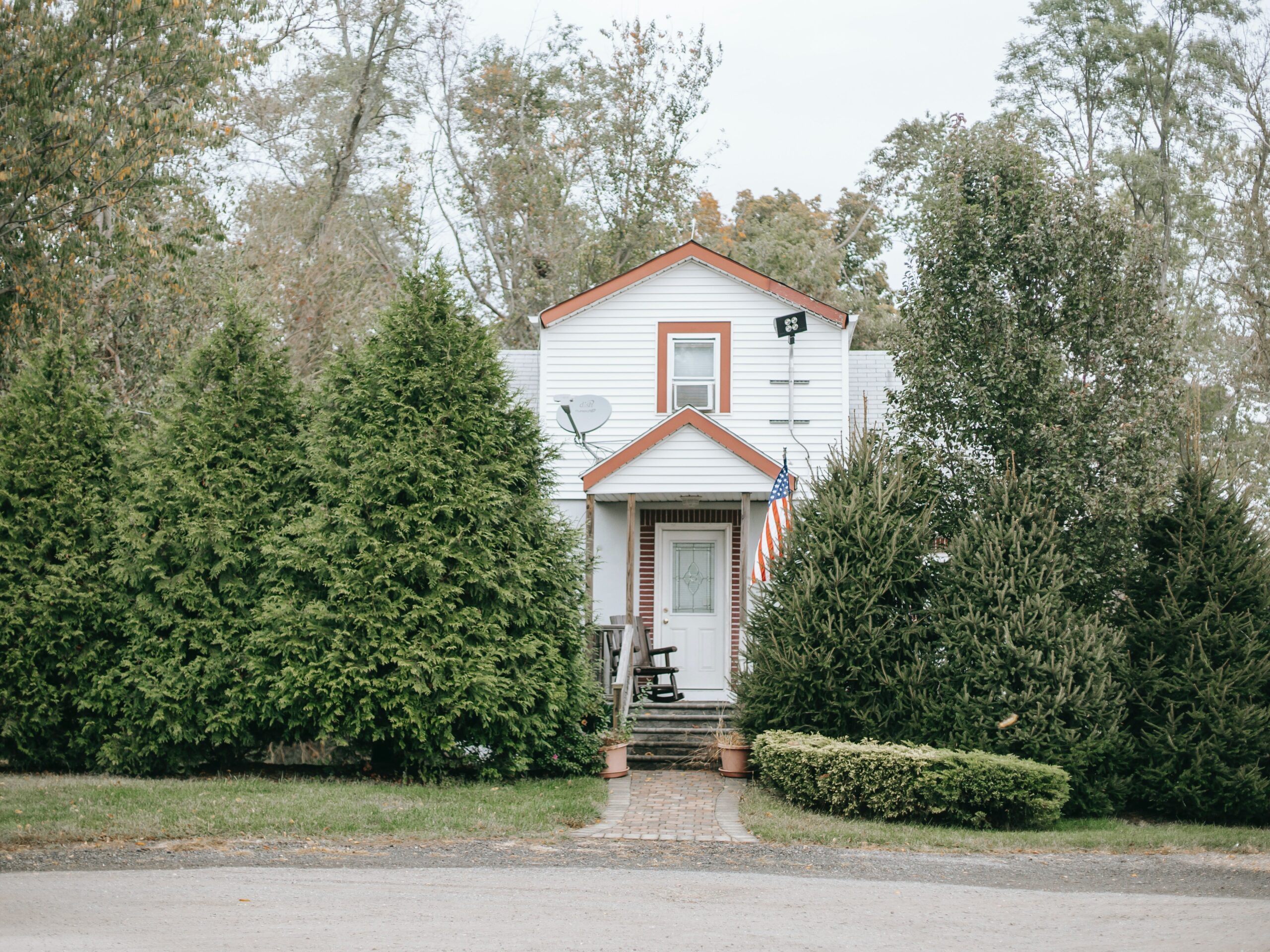
Safety At Home
Gun violence casualties are rising every day, with a staggering 16,663 deaths recorded in the U.S. as of May 23, 2023. This makes it more important than ever to secure your home against potential threats, including active shooters. Most houses are quite vulnerable to break-ins and forced entries – let’s take a look at some of the most significant challenges:
- Lack of preparedness. The saying “prevention is better than cure” holds true in the case of active shooter situations. A significant challenge is the lack of preparedness. Many of us do not have an emergency plan, much less a drill to practice in case you’re at home and there’s an incident nearby.
- Physical barriers. A locked door isn’t always going to be enough.Most homes lack the sturdy physical barriers necessary to delay or prevent the entry of an active shooter.
- Lack of immediate law enforcement response. While law enforcement officers are trained to handle active shooter situations, their response time can vary, leaving individuals to fend for themselves in the crucial first moments of an attack.
- The unpredictability of the situation. Active shooter situations are highly unpredictable. The shooter may have a plan while the residents are reacting in the moment, which can put them at a disadvantage.
- Psychological factors. Stress and fear in an active shooter situation can lead to panic and poor decision-making. It’s hard to predict how one will react in such a high-stress situation, and even those with training may freeze or make mistakes.
But you can overcome all these problems through preparation, more specifically, by employing the following methods to address them directly.
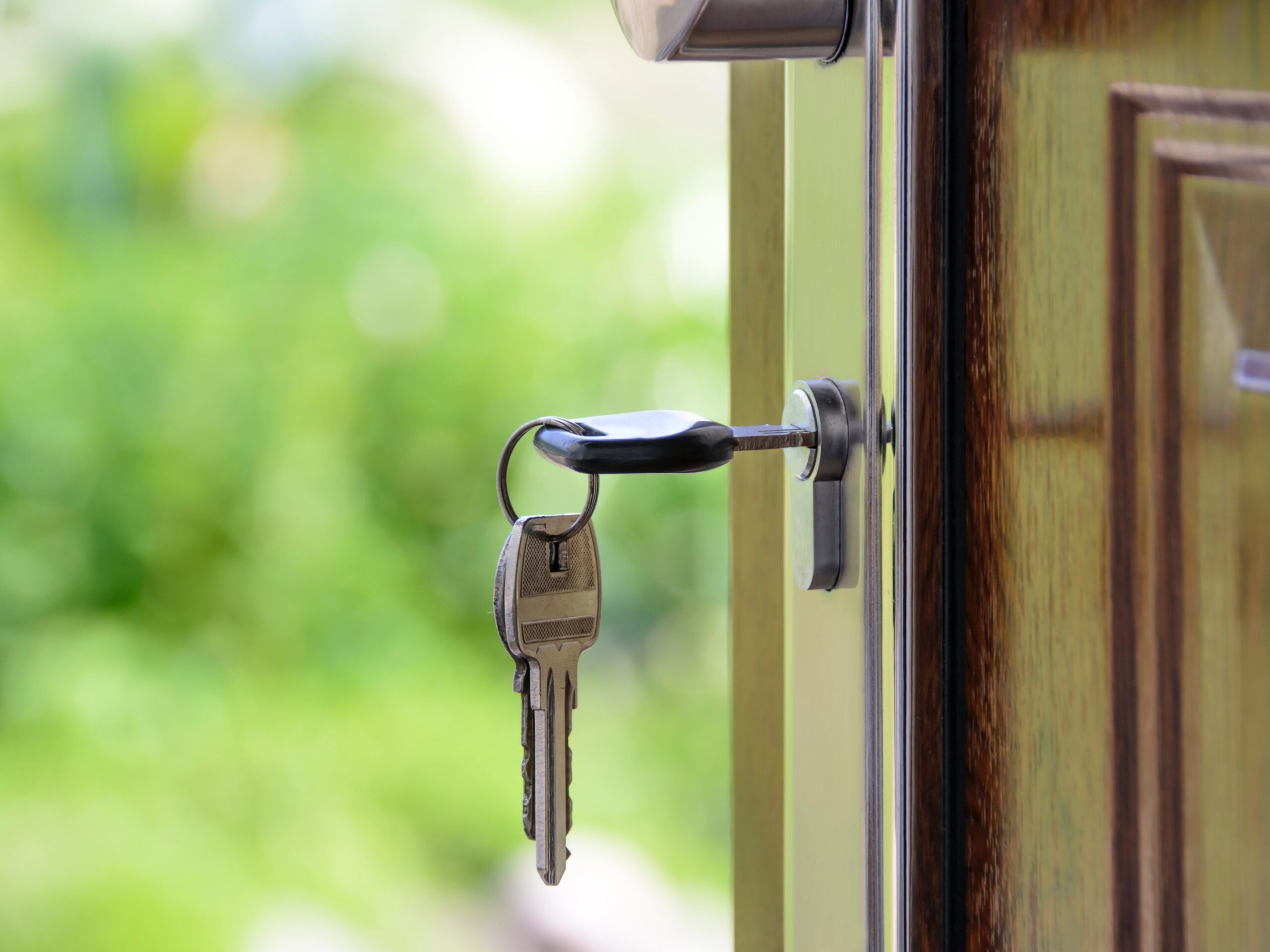
1. Awareness Of Surroundings
A key aspect of home safety is heightened awareness of your surroundings. This involves both the physical environment and the behavior of people around you. Here’s how you can increase your awareness:
- Know your neighbors. Building relationships with your neighbors can provide an additional layer of security. They can alert you to suspicious activities and support you in emergencies. Engage in neighborhood watch programs if available.
- Recognize suspicious activities. Unusual behaviors or activities in your neighborhood could be precursors to potential threats. This could include unfamiliar vehicles or people, especially if they appear to be surveying homes or behaving oddly.
- Secure your home. Regularly inspect your home for potential vulnerabilities. Ensure windows and doors are secure, locks function properly, and security systems are in good working order. Regular maintenance can help prevent unwanted surprises.
- Control access. Be cautious about who has access to your home. Limit the number of people with spare keys and consider changing locks if keys are lost or stolen.
- Keep emergency contacts accessible. Have a list of important numbers – such as local law enforcement, trusted neighbors, and family members – easily accessible in case of emergencies.
Remember, awareness of your surroundings goes beyond just knowing your physical environment. It also involves understanding the behaviors and routines of those around you. By maintaining this heightened awareness, you’ll be better prepared to spot potential threats and react appropriately.
2. Creating Physical Barriers
In addressing the physical barrier challenges in home safety, securing the entry points of your home should be a top priority.
Your front, back, and interior doors are potential entry points for an intruder. Each of these doors needs to be considered in your home safety strategy. Regular doors with standard locks might not protect in an active shooter situation. Reinforcing these doors by replacing them with solid core doors or adding additional security measures can make a significant difference.
This is where a device like DoorJammer comes into play. DoorJammer is a portable, compact device designed to secure any door in seconds. Its patented design works by using the force of the intruder’s attempt to enter against them. As the intruder pushes the door, DoorJammer is pushed harder into the floor, increasing the resistance and making the door harder to open.
Installing a DoorJammer on your doors in an active shooter scenario could buy you the precious moments you need to hide, escape, or alert authorities. It can be easily moved and installed on different doors as needed, making it a versatile tool in your home safety arsenal.
Beyond doors, don’t forget to secure other entry points like windows. Reinforced glass, security film, or window bars can deter or delay an intruder. The goal is to create as many layers of protection as possible, keeping you and your loved ones safe in your home.
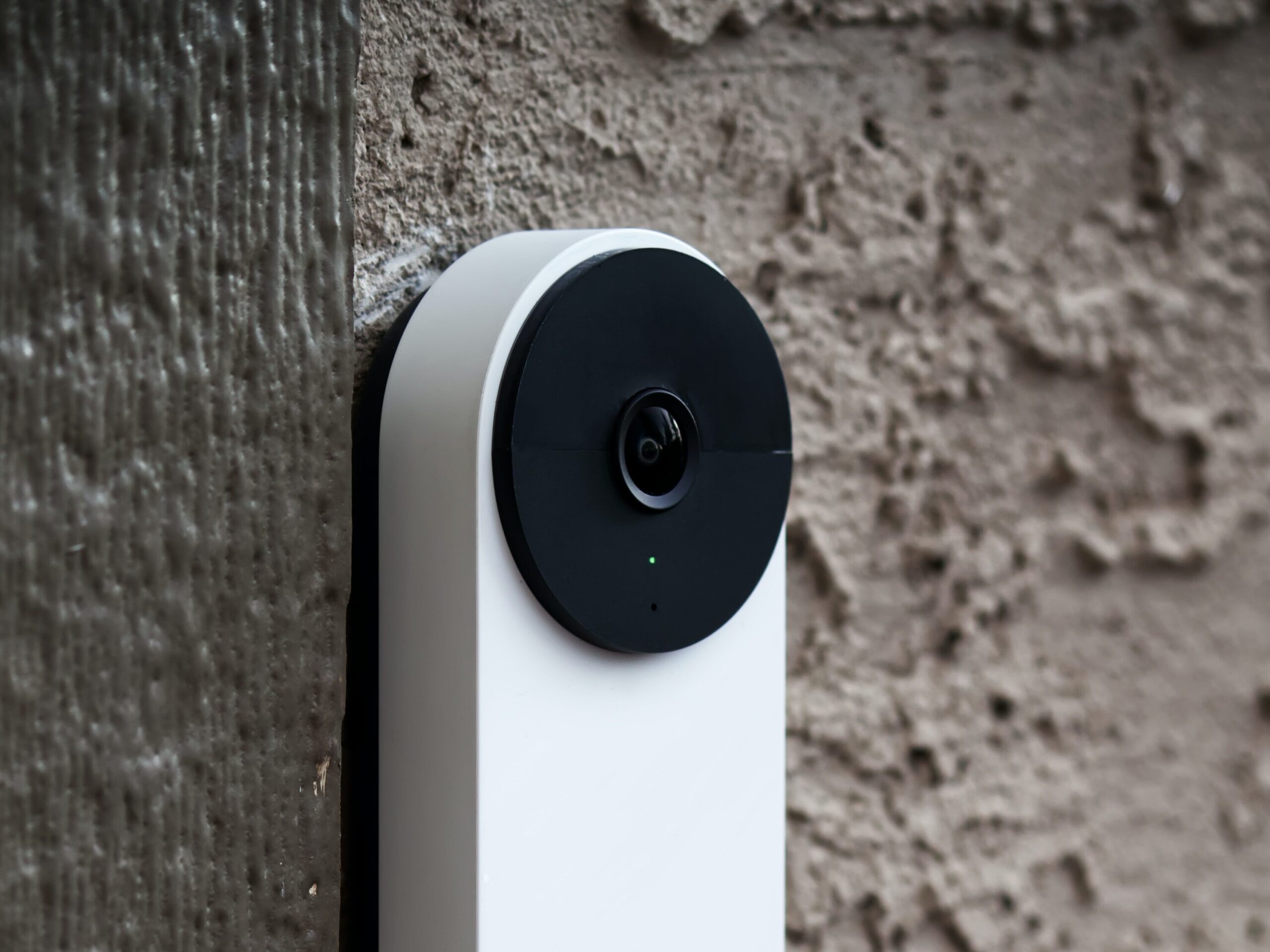
3. Alarm Systems And Cameras
In the critical moments following the initiation of a home invasion, alarm systems and surveillance cameras can significantly mitigate the problem of delayed law enforcement response. These technological tools extend your awareness and add an extra layer of security to your home.
Alarm systems are designed to alert homeowners and security companies to potential threats, offering an immediate response to unusual activity. Upon detecting an intrusion, a home alarm system can automatically notify a security company or, in some cases, directly alert local law enforcement. This immediate notification can help reduce law enforcement’s response time, bringing them to the scene as quickly as possible.
On the other hand, surveillance cameras provide a live feed of your property, enabling homeowners to monitor their surroundings in real-time. In an active shooter situation, surveillance cameras can offer crucial information about the number of intruders, their location, and their actions. Sharing this information with law enforcement can better prepare them as they approach the situation, improving their response time and effectiveness.
Moreover, the visible presence of surveillance systems can also act as a deterrent, potentially preventing a home invasion or active shooter situation before it even begins.
4. Emergency Drills
The unpredictability of an active shooter situation is one of the most significant challenges home security faces. No fixed rules or patterns dictate how these incidents will unfold, making it difficult to prepare for every possible scenario. However, some measures can be taken to improve the chances of effectively responding to such a situation.
One of the most effective ways to combat this unpredictability is through regular and comprehensive emergency drills. Like fire drills, these exercises can help familiarize you and your family with different scenarios and how to respond to them. The aim is to practice various scenarios so that if an active shooter occurs, you can react quickly and effectively, even under stress.
Emergency drills should include practicing how to escape your home safely, where to hide if escape isn’t possible, and how to communicate with law enforcement. It’s also important to identify safe rooms in your home where you can barricade yourself and your family until help arrives.
5. Addressing Psychological Factors
One crucial approach is mental preparedness. This involves regularly reminding yourself and your family of the emergency procedures in place, the importance of staying calm, and the need to act decisively when the situation calls for it. Familiarity with emergency procedures through drills can help reduce panic and increase confidence.
Professional support can also be beneficial. Therapists and counselors trained in trauma and stress management techniques can provide valuable tools for managing anxiety and fear related to potential active shooter situations. These professionals can help you develop coping strategies that promote calm, focused responses in high-stress situations.
Additionally, mindfulness techniques, such as deep breathing and grounding exercises, can effectively manage acute stress responses. These techniques can help slow your heart rate, clear your mind, and allow you to make rational decisions under pressure.
Lastly, support networks can play a crucial role in managing psychological factors. Regularly discussing your fears and concerns with trusted friends, family members, or support groups can help you feel less alone in your worries and more equipped to handle a potential active shooter situation.

Protecting Students In School Shooting Scenarios
Schools are supposed to be safe environments for students to learn, grow, and thrive. However, the recent increase in school shootings presents a significant challenge to maintaining the safety of these spaces.
According to the Gun Violence Archive, as of May 23, 2023, there have been 237 mass shootings in the United States, resulting in 16,663 gun violence deaths across all settings. Of those deaths, 105 were children aged 0-11, and 598 were teenagers aged 12-17.
All active shooter situations are volatile, and the confined, indoor spaces in most schools amplify the risk. There are a number of challenges that schools face when it comes to protecting students and staff in these scenarios:
- A large number of people. Schools have a high density of individuals, making it difficult for security measures to be effective and for people to evacuate quickly in an emergency.
- The young age of many students. The young age of students can also pose a challenge. Younger students may not fully understand the severity of the situation or know how to respond appropriately.
- Inconsistent building layouts. School buildings can be sprawling and complex, with various nooks and crannies that can provide a potential shooter with numerous hiding spots or ambush points.
- Limited resources. Most educational facilities operate on tight budgets, limiting the resources available for security measures.
- Public accessibility. Schools are public places, often integrated into the community, making it challenging to balance access and security.
When it comes to solving these issues, no single method will be the ultimate solution. But with certain strategies in place, nothing is out of reach.
1. Safety Education
Safety education is essential because it empowers students with the knowledge and skills they need to protect themselves and others. By fostering awareness and preparedness, students can understand the potential dangers of an active shooter situation and learn the appropriate steps to take. This includes recognizing safe areas within the school, understanding the difference between lockdown and evacuation procedures, and the importance of adhering to the directions provided by school staff during such events.
Furthermore, safety education promotes a sense of responsibility and cooperation among students. As students become more knowledgeable about active shooter scenarios, they can help contribute to a safety culture within the school. They can better understand their roles during an emergency and how their actions can support the overall safety and well-being of the entire school community.
Ultimately, when students are educated about these scenarios, they are less likely to panic and more likely to act in a manner that ensures their safety and that of their peers. This effective response is crucial in scenarios where many individuals are present, as it aids in maintaining order and preventing additional harm.
2. Shooter Awareness
Shooter Awareness programs play a crucial role in addressing the challenge of the young age and inherent inexperience of students during an active shooter situation. These programs educate students about the potential threat of active shooters and train them to respond effectively.
The essence of Shooter Awareness lies in the understanding that though students are young, they can learn, adapt, and react in crisis situations when provided with proper guidance. Through these programs, students learn to recognize the signs of potential threats, protect themselves and others, and communicate effectively with law enforcement during such incidents.
Students are taught about the “Run, Hide, Fight” strategy, a recommended protocol in many schools. The strategy encourages students to run and escape if possible, hide if escape isn’t an option, and fight back against the shooter as a last resort. It’s important to note that ‘fight’ doesn’t necessarily mean physical confrontation – it could be as simple as throwing objects to distract the shooter.
These programs often incorporate practical drills and simulations, which help children understand the realities of an active shooter scenario and how to respond. Though potentially frightening, these drills are carefully orchestrated to ensure the students’ psychological well-being while still imparting crucial knowledge.
Shooter Awareness programs, therefore, are a vital tool in combating the vulnerability of students during active shooter situations, transforming their inexperience into informed action.
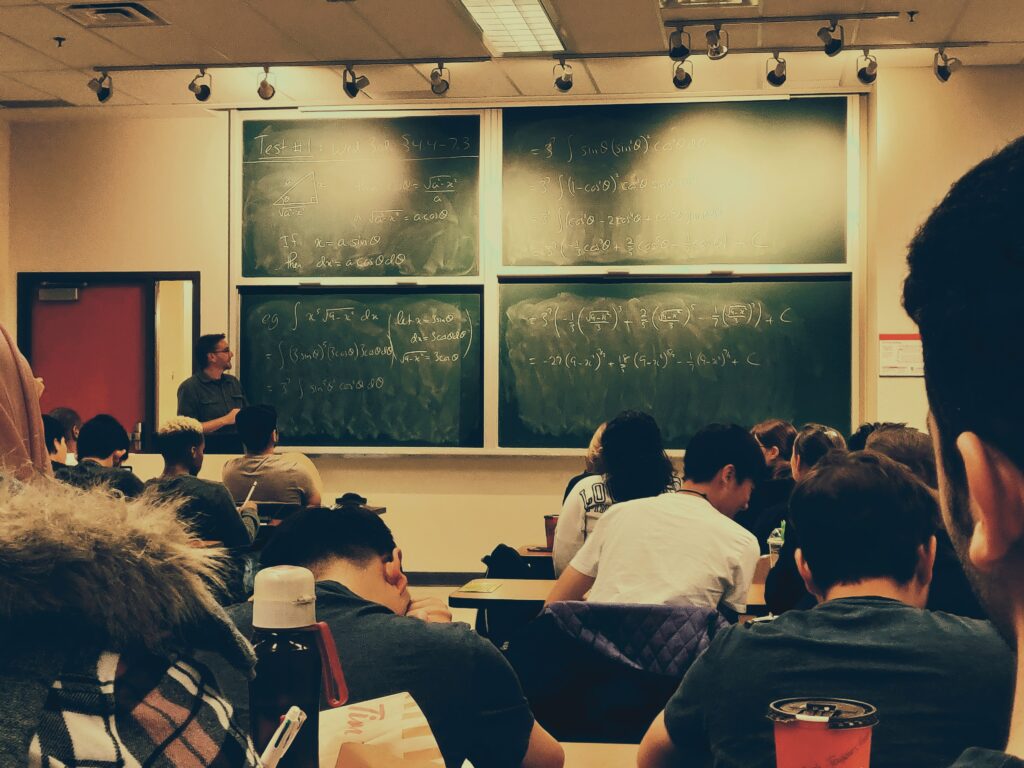
3. Classroom Lockdown Procedures
In a school shooting scenario, Classroom Lockdown Procedures are designed to keep students and staff safe in their current locations until the threat has been neutralized or the all-clear signal has been given. These procedures can be tailored to various school building layouts, whether a single-story elementary school or a sprawling high school campus.
The challenge with diverse school layouts is that different buildings and rooms may have unique needs in terms of lockdown procedures. For instance, a science lab might have more potential hazards than a standard classroom or a gymnasium might require a different approach due to its size and lack of traditional doors. Each school needs to assess its layout and adjust its lockdown procedures accordingly.
To address the diversity in layout, Classroom Lockdown Procedures typically emphasize keeping doors locked and secured, staying out of sight, and maintaining silence to avoid attracting attention to the classroom. The specific procedures may vary depending on the school’s layout, the student’s age, and the threat’s nature.
As lockdown procedures can’t simply rely on door locks to ensure the safety of students, it’s best to deploy many security measures. In such a serious scenario, the DoorJammer could help create a strong physical barricade and withstand up to 1,000 pounds of direct force. Even when the lock is compromised, DoorJammer will stay in place and ensure the safety of everyone in the room. Not to mention the DoorJammer Lockdown is a sturdier version and provides an even stronger barrier, preventing the shooter from entering.
4. Implementing Cost-Effective Measures
A significant challenge schools face in enhancing security is the limitation of resources. Budget constraints often make it challenging to implement high-cost security measures. However, many cost-effective physical security measures can be implemented to address these limitations and substantially improve the safety of schools.
Other cost-effective security measures can include improved lighting in and around the school premises to deter potential threats and increase visibility during emergencies. Similar to fire drills, regular security drills can also be conducted without requiring a significant budget and are invaluable in preparing students and staff for potential emergencies.
Innovative technology can also be leveraged to enhance security within a budget. For instance, simple alarm systems can be installed to alert authorities immediately in an emergency. Similarly, low-cost surveillance cameras can provide real-time monitoring of the school premises.
By implementing these cost-effective physical security measures, schools can make significant strides toward improving safety and preparedness for active shooter scenarios, even within limited resources.
5. Security Cameras And Access Regulation
In response to the challenge of high public accessibility, implementing security cameras and access regulation measures could significantly improve safety in a school shooting scenario.
Security cameras can serve as a deterrent and a means of evidence gathering. Strategically placed cameras monitor entrances, exits, hallways, and common areas, helping to prevent unauthorized access and identify potential threats. In an active shooter scenario, real-time surveillance could provide law enforcement with critical information about the shooter’s location and activities, assisting in their response strategy.
Meanwhile, access regulation measures are critical for managing public accessibility. Implementing a single entry point during school hours can help monitor who enters and leaves the premises. Visitors must sign in and may be asked to present identification, ensuring that all individuals can be accounted for.
Advanced technologies such as electronic access control systems can further enhance these measures. These systems can use key cards, codes, or biometrics to control who has access to certain areas of the school. In the event of an emergency, these systems can be used to lock down the school quickly, limiting the movement of a potential shooter.
Moreover, schools can set up perimeter fencing and maintain secure boundaries around the property to deter unauthorized access. This controls who enters the school and provides an additional layer of security.
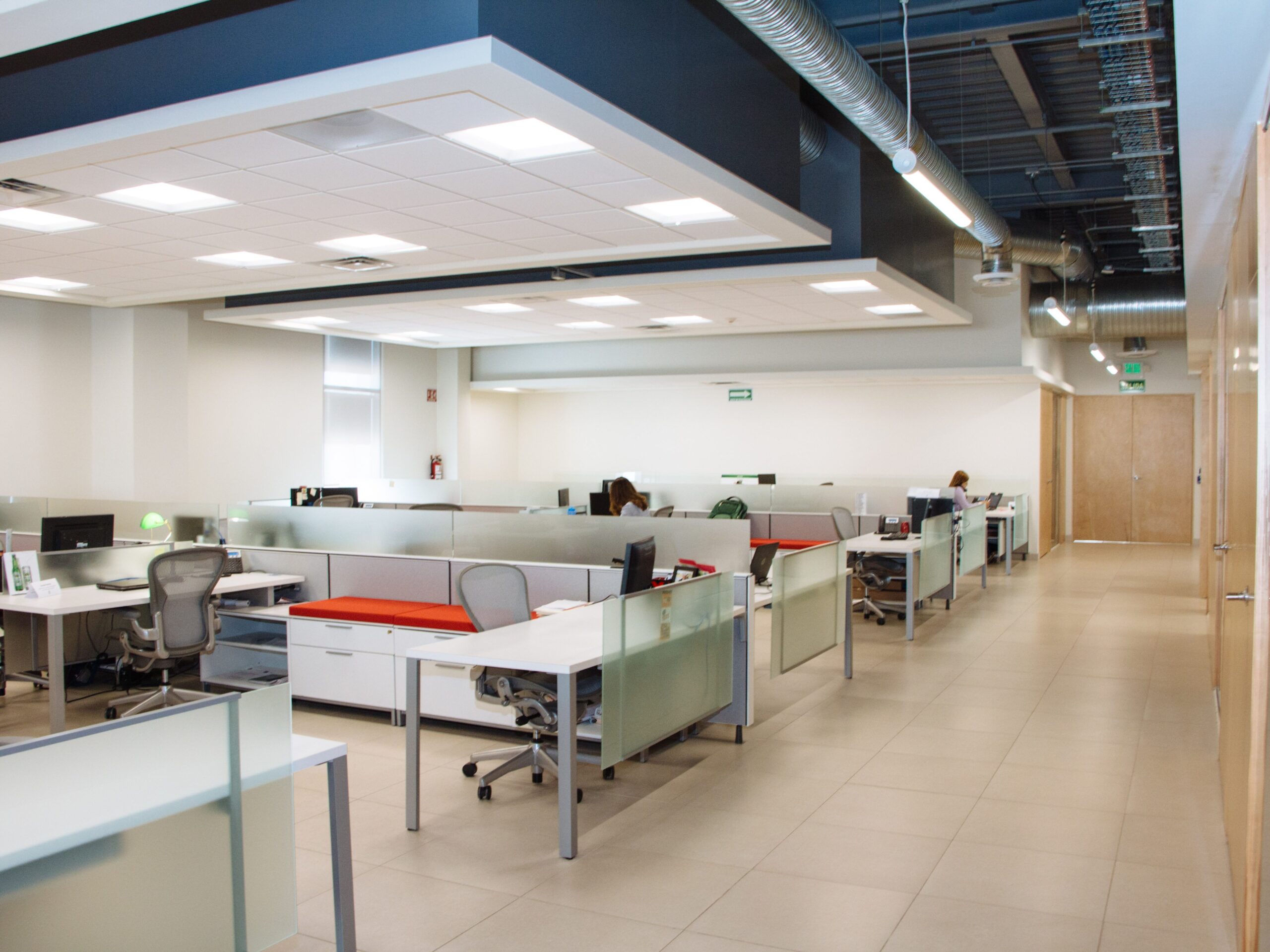
Protecting Office Workers
Between 1996 and 2021, there were 53 workplace shootings carried out in the US, accounting for more than 30% of the 188 shootings in this period. That is why in the office environment, maintaining safety and security is a multifaceted challenge that requires careful consideration and planning. However, the office setting, with its unique dynamics and diverse range of functions, presents several specific safety challenges:
- Open spaces. Many offices have open-plan layouts, which can provide less cover or places to hide in an active shooter situation.
- Large number of people. Similar to schools, offices often house a large number of people in a confined area. This can make it difficult for security measures to be effective and for people to evacuate quickly in an emergency.
- Psychological factors. The fear and panic that an active shooter can cause may lead to irrational behavior, making the situation even more dangerous. Training and preparedness can help mitigate this, but it’s still a significant challenge.
- Control access. Depending on the office’s size, controlling access to all parts of the building could be challenging. This could potentially allow an active shooter to move freely within the premises.
- Age and physical ability of workers. Offices can have a wide range of age groups and people with different physical abilities, affecting how individuals respond to an active shooter situation. This diversity necessitates a comprehensive approach to training and response strategies.
Addressing these challenges is no small task, but multiple measures could help solve these problems.
1. Office Layout Planning
Many modern offices are open spaces, a potential vulnerability in an active shooter scenario. The situation may quickly get out of hand because there may be no furniture or physical barriers to hide behind. So, it’s best to take the following into account when planning the office layout:
- Strategic use of furniture and partitions. Open office spaces can be divided with furniture and partitions to create barriers and potential hiding places. These physical barriers can obstruct the view of a potential shooter and make it harder for them to target individuals. Using large bookshelves, cubicle walls, filing cabinets, or other large pieces of furniture can break up the open space and provide areas for employees to hide in an emergency.
- Secure areas. An office design can include designated secure areas or rooms with reinforced doors and walls if possible. These spaces can be used as safe zones during an emergency.
- Clear exit paths. Office layout design should ensure clear exit paths, so employees can quickly evacuate if necessary. Exit routes should be marked and unobstructed. In larger offices, multiple exit points should be accessible from all areas.
- Visibility considerations. While partitions and barriers can provide protection, it’s also important to maintain visibility for surveillance and monitoring purposes. Strategic placement of mirrors or surveillance cameras can help to cover blind spots in larger open spaces.
- Natural barriers. Natural barriers such as indoor plants or water features can subtly break up open spaces without making the area feel too enclosed or restricted. These can provide some degree of concealment, though not necessarily cover.
- Flexible spaces. Consider incorporating movable walls or modular furniture into the office design. These can be rearranged to create more secure configurations in response to specific threats or changes in the office environment.
The design should be tailored to the specific needs and features of the office and should be part of a larger comprehensive safety and security plan. The goal is to balance an open, collaborative environment with the necessary precautions to keep employees safe.
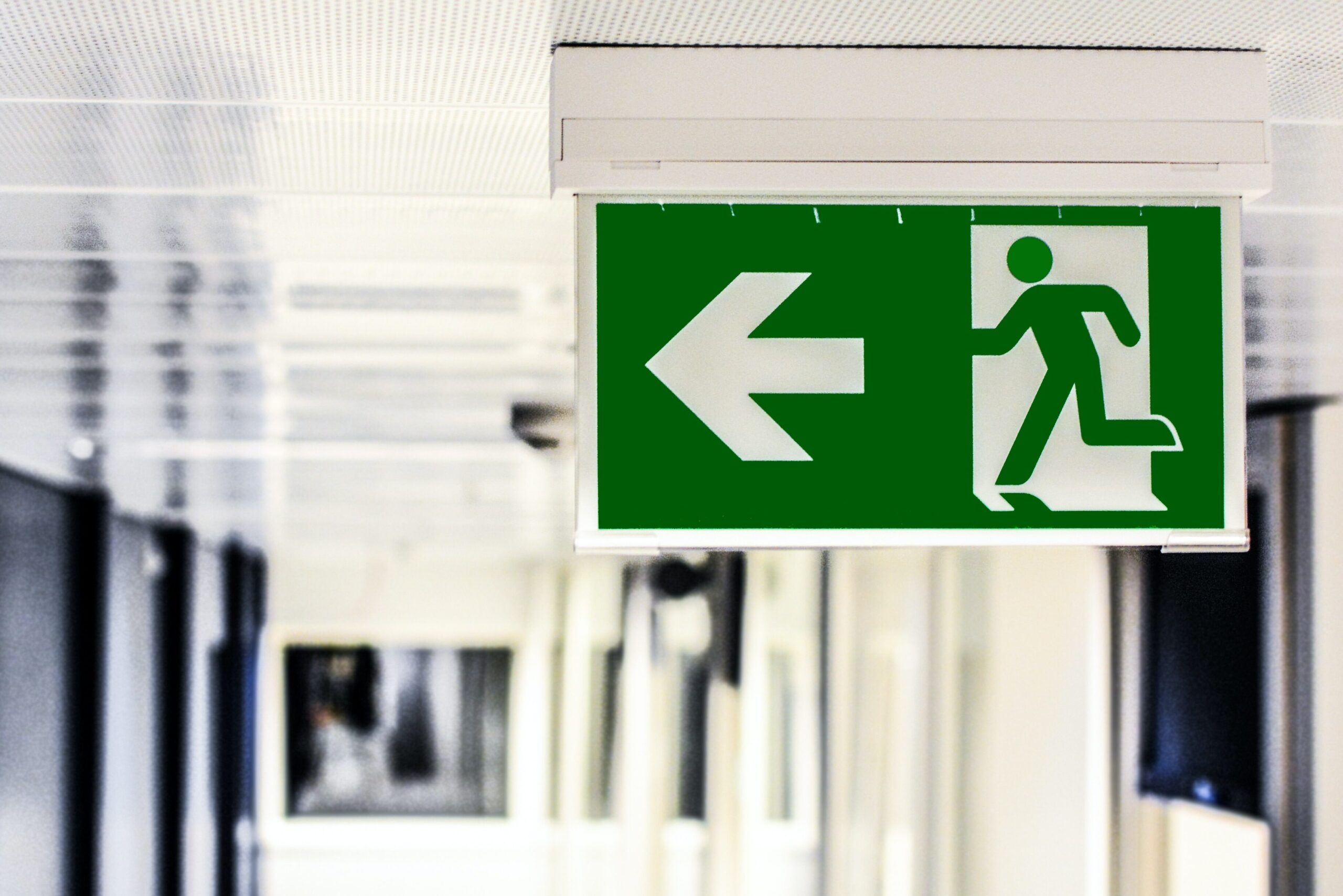
2. Emergency Plans
Addressing the challenge of managing a large number of people in an office shooting scenario can be significantly mitigated through comprehensive emergency planning. The first step is to develop a detailed plan that specifies actions to be taken during such a situation. This plan should be designed considering the office’s layout and the size of the workforce, and it should be easily accessible to all employees.
A crucial part of this emergency plan is regular training and drills. Employees should be trained to recognize potential threats, understand the office’s layout and exit routes, and know how to respond during an active shooter event. Drills are an opportunity for employees to practice these actions in a controlled environment, reinforcing their training and preparedness.
Along with training and drills, clear communication protocols are an essential part of managing a large number of people during an emergency. Rapid and efficient communication is paramount in these situations. The emergency plan should thus include a system for promptly alerting all employees about the situation. This could range from a building-wide public address system to a dedicated emergency notification app.
While emergency planning cannot prevent a shooting event, it equips employees with the knowledge and skills they need to respond effectively, potentially reducing the severity of the incident and saving lives. The plan needs to be updated regularly to remain effective, reflecting changes in staff, office layout, or new best practices in emergency response.
3. Dealing With Psychological Factors During And After The Shooting
Proactively, individuals can be trained to handle high-stress situations better. Through active shooter training, individuals learn about the practical steps they need to take during such an event and get a chance to rehearse these steps mentally. This can help them remain calm and make better decisions under pressure. Regular drills can reinforce this training and help people feel more prepared, reducing anxiety and fear.
Also, fostering a supportive and open work environment can help alleviate some of the anxiety surrounding such events. If employees feel comfortable discussing their fears and concerns, they can better support each other in times of crisis. Regular communication about safety procedures and what to do in an emergency can also help reduce fear and uncertainty.
Providing immediate and ongoing mental health support is crucial in the aftermath of an active shooter event. This might include crisis counseling, support groups, and mental health services to help individuals cope with trauma and stress. It’s essential to recognize that everyone’s reaction to such an event will be different, and there is no “normal” response. Providing a range of support options ensures everyone can access the help they need.

4. Regulating Access Through Security Devices
Regulating access can get tricky when myriads of people walk through the office complex each day. Everything from security card access to even simple deadbolts could greatly assist in preserving lives.
Surveillance systems, secure door locks, and panic buttons, among other measures, can deter potential threats. In the unfortunate event of an active shooter scenario, these measures can help slow down the perpetrator, thereby giving law enforcement more time to respond.
Devices like the DoorJammer and door security bars also add protection during lockdown situations. DoorJammer is designed to handle 1,000 pounds of direct force efficiently and doesn’t damage the floor or door. The device can create a strong physical barrier, reinforce the door, and prevent the perpetrator from entering the room.
Security bars, however, prevent anyone from entering through the window. They have been used for quite some time now and can help protect the ground office level from forced entry. Combined with DoorJammer, this can create a highly secured room that will save lives and allow law enforcement to arrive at the scene.
5. Evacuation Chairs And Buddy System
In an office shooting scenario, workers’ varied ages and physical abilities may pose challenges. Strategies such as a buddy system and evacuation chairs can help mitigate these challenges.
A buddy system involves pairing individuals together, particularly pairing able-bodied individuals with those who may require additional assistance in an emergency. This arrangement ensures that those who struggle with mobility or become disoriented or panicked under stress have someone to aid them in reaching safety.
For instance, in an active shooter scenario, the buddy can help guide their partner to a safe hiding place, assist them in barricading the door, or, if possible, help them evacuate the premises. The buddy system can also benefit older employees who might have difficulty hearing or seeing, as their buddy can ensure they are aware of the situation and understand what actions to take.
Evacuation chairs are another crucial tool in addressing the issues of age and physical ability. These chairs are designed to transport individuals with mobility issues down the stairs during an emergency. In an office shooting scenario, an evacuation chair could quickly and safely move an individual from an upper floor to a lower floor or exit point. It’s important to note that evacuation chairs should also be incorporated into training and drills, and designated employees should be trained to use them correctly.
Closing Thoughts
In today’s world, personal safety and preparation are more important than ever, especially when protecting oneself during an active shooter scenario. Whether at home, school, or the office, tangible steps can be taken to minimize risk and increase protection.
It is essential to be aware of one’s surroundings and always to report any suspicious activity to the appropriate authorities. Establishing and regularly practicing emergency procedures through drills can help prepare for a potential active shooter scenario.
Various security measures are essential to better prepare for an emergency like a shooting. And while security cameras can spot intruders and security bars prevent someone from entering through a window, DoorJammer could help students, office employees, or even families barricade the door. The device withstands up to 1,000 pounds of direct force, is highly versatile, and easy to carry and install.
Taking steps to protect oneself from an active shooter is a responsible and (unfortunately) necessary measure in today’s world. No single security measure is foolproof, and only by being proactive and maintaining awareness can individuals increase their safety and that of others.